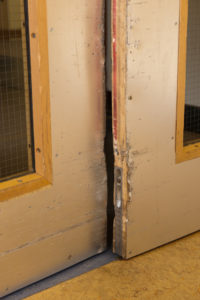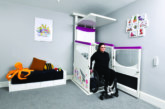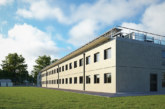Sally Moores urges specifiers to look after the fire doors in their properties to ensure they continue to provide maximum protection to occupants.
The simple implementation of a good maintenance regime and the application of reputable fire-rated door protection products can help win the battle against detrimental and costly impact damage to fire doors. Fire doors have the important job of preventing the spread of smoke and flame in buildings in the event of a fire, helping to save both lives and buildings. Article 17 of the Fire Safety Order states it is a legal requirement to adequately maintain fire doors so they are fit for purpose.
It is therefore vital that not only are fire doors specified, supplied and fitted correctly, but also maintained to the highest standard. A standard which everyone in the process, be it contractor, architect, merchant, installer, inspector, director or building manager, is responsible for.
 On the front line
On the front line
In busy, well-used buildings, such as schools, hospitals and entertainment venues, fire doors are certainly in the front line when it comes to impact damage. The cause of this damage can come in many forms, some specific to the use of the premises. For example, hospital doors are subject to significant wear and tear from the movement of wheeled hospital beds and chairs pushing through them, schools from the general volume of students and staff flowing around the buildings and venues experiencing impact from heavier performance equipment.
All of the above can eat away at the composition of a fire door, which may start to cause problems with the functioning and integrity of the door.
Small problems can have big consequences
Though some of the impairment may seem inconsequential to begin with, it can actually, quite early on, start to have a serious effect on the functioning of the fire doors.
If left un-checked, holes literally can appear in the defence against flame and smoke ingress that a good working fire door should offer.
It has been ascertained that fire doors in busy places need constant inspection to be satisfied of their condition — so what do we need to be aware of and what can be done to prevent detrimental damage in the future?
The sum of many parts
A fire door is made up of many components that all need to be inspected on a regular basis, the recommendation is every six months, but those that are in high traffic areas should probably be looked at once a week. Parts such as door leaf, frame, seals, ironmongery, gaps between doors and frames, closers, signage, hinges, glazing, locks/latches and grilles should all be under scrutiny.
The combination of them all performing as intended leads to a fully functioning fire door. Adding reputable door protection products can help to protect some of these essential elements of the door, saving time and money from constant repair and replacement in the future.
Mind the gap
Door edges are persistently damaged by traffic passing through, nibbling away at the timber, leading to the gaps between the meeting edges/edges and frames expanding to greater than the 3mm recommended for the efficient use of intumescent strips.
To break the cycle of this persistent battering a fire-rated PVC-U door edge protector can be fitted to both meeting edges and hinged ones. With a reinforced inner, giving extra strength, the door edges will no longer experience splintering or chipping.
As long as a door edge is not too badly damaged a door edge protector can also rectify the problem of too large a gap. The 9mm reinforced inner will reduce the gap between the meeting components, in this respect making the door compliant.
 Perfect beading
Perfect beading
One of the most vulnerable components of the door is glazing beads, which can become split, loose or missing very easily, affecting the integrity of a fire door. These problems again stop the all-important intumescent seals around the vision panel of a fire door from working to an optimum, leading to the premature ingress of smoke and flame.
In this situation the glazing bead unit can be replaced with a fire rated PVC-U clad hardwood unit. The plastic covering will act as a protective shield to both the timber and the enclosed intumescent, preserving their condition. By incorporating these units into new fire doors during the initial manufacturing process, their lifecycle can be extended.
Taking the flack
The main body of the door, or leaf, is subject to continual wear and tear simply by people using it — be it feet, hands, trolleys or equipment being pushed or dragged through; they all leave their indelible mark.
If a door leaf is continually hit at the same point it will in team form a hole, crack or indent, which will render a fire door non-compliant to fire regulations. A simple solution to ward off this onslaught would be the installation of a 2mm thick PVC-U door protection panel.
Recommendations and certifications
Whilst fitting door protection products is good practice to help protect from damage, improve the look and extend the lifecycle of doors, it is imperative that compatibility and certification is checked on the products specifiers purchase and fit.
A reputable supplier will have carried out the current, relevant fire testing on their door protection products whilst in situ on a door. The results of these tests will be readily available to you on request for your assessment and to include in operation and maintenance manuals.
It is the duty holders’ responsibility to ensure that relevant rated door protection, such as 30FD or 60FD door edge protectors are fitted on the relevant rated door. The door fire rating should be shown on a label on the top of the door or the information kept in the buildings O&M manuals.
Protecting people, buildings and budgets
Looking after fire doors and protecting them against damage not only plays an exceptionally important part in the safety of a building and it’s users but can also help with the reduction of maintenance and repair costs proving, if you look after your fire doors, they will look after you — in more ways than one.
Sally Moores is Marketing Manager, Harrison Thompson & Co. Ltd









